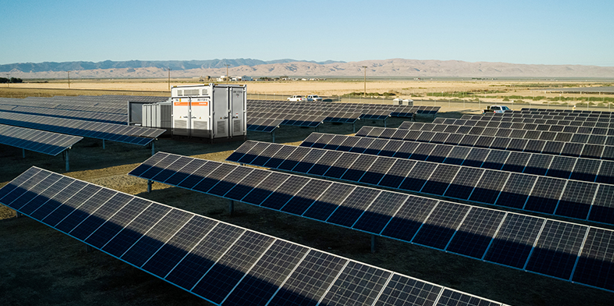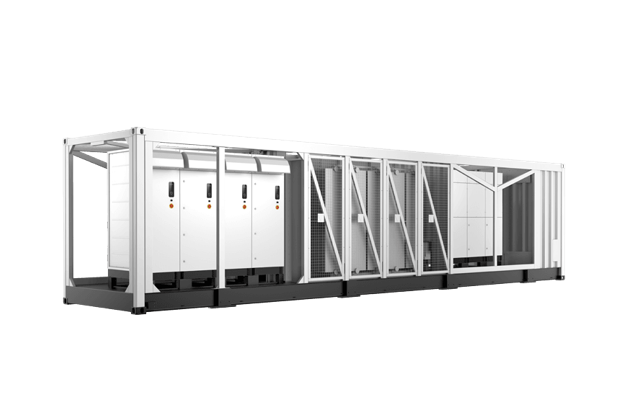Transformers are components of industrial or power systems that boost or reduce voltage during the power transmission process. Generally speaking, it can be divided into low-voltage transformers with a maximum capacity of 600 volts and medium-voltage transformers that reach several thousand volts. The decision between these kinds depends on the application's voltage demands, with medium-voltage current transformers essential for larger capacity and distribution.
For operating safety and efficiency, each type has unique insulation systems, thermal management features, and regulatory compliance criteria.

Introduction of Both Types of Transformers
The working principle of the transformers is based on electromagnetic induction. When AC passes through the primary coil, it generates a changing magnetic field in the transformer's core. The changing magnetic field can induce a voltage in the secondary coil.
The ratio of turns between a transformer's primary and secondary coils determines the transformation ratio. If the quantity of the secondary coil's turns is much more than that in the primary coil, the transformer is a step-up transformer; On the contrary, it is a step-down transformer.
The main role of low-voltage transformers is to decrease voltage for residential, commercial, and light industrial usage. For common appliances and illumination, they may convert 480V or 600V to 120/240V.
In contrast, a MV current transformer is used for higher voltage applications, including industrial facilities, gigantic commercial buildings, and electrical distribution networks. Their structure and insulation are built for greater voltages for security and efficacy.
Pros and Cons of Low-voltage and Medium-voltage Transformers
Low-voltage transformers are small in size and easy to transport and install. They are very suitable for household, commercial, or small industrial environments. Medium-voltage transformers are commonly used in larger industrial applications or power systems and can handle higher power and voltage levels.
Due to its simple structure, low-voltage transformers may not be suitable for all types of loads and conditions. The complex structure of medium-voltage transformers makes them more widely used, but they may require more maintenance and monitoring.

Key Differences Between the Two Products
So, what are the specific differences between the two transformers? And which product should I choose? Here is a detailed comparison:
1. How Do Low and Medium-voltage Transformers Differ in Voltage Level?
Low-voltage transformers are utilized in home and light commercial applications below 600 volts. In contrast, medium-voltage transformers carry up to 69,000 volts for industrial, utility, and big commercial uses. Medium-voltage transformers are vital for urban and industrial power networks because they can distribute energy over greater distances with low losses.
2. What are the Applications of Low and Medium-voltage Transformers?
Due to their voltage capacity, low-voltage transformers are used in households, startups, and limited electrical distribution networks. Medium-voltage transformers are used in larger applications, including industrial factories, data centers, substations, and the grid, to scale down high-voltage power for local distribution.
3. Do Low and Medium-voltage Transformers Differ in Efficiency and Losses?
Transformer efficiency measures how effectively they transmit input to output power with little loss. Due to its smaller capacity and lower voltage level, low-voltage transformers typically have lower energy losses (absolute value). Medium-voltage transformers have higher efficiency, for example, the efficiency of Sungrow’s medium-voltage transformers are more than 99%. On the contrary, low-voltage transformers rarely reach this number.
Moreover, the medium-voltage transformer's value in sustainable energy management is highlighted by its efficiency in large-scale operations that save energy and cut operating costs.
4. What is the Scale of Low and Medium-voltage Transformers?
Low and medium-voltage transformers are different at scale. Low-voltage transformers are small and less scalable since they are intended for specific purposes. While medium-voltage transformers may serve the whole factory, so it is larger in size. Correspondingly, its installation is also more complex.
5. Is There a Large Cost Difference Between Low and Medium-voltage Transformers?
The answer is uncertain. The cost of medium-voltage transformers lies in their bigger size, more refined design, higher voltage-resistant standards, and more expensive materials. In a transformer, voltage is inversely related to current. When the output power (capacity) of a transformer is certain, if the voltage is increased, the current will decrease accordingly. Lower current means less energy loss because energy loss is proportional to the square of current. As a result, a medium-voltage transformer can have thinner wires inside it when transferring the same power, reducing material costs and weight.
Also, due to their efficiency and lower energy losses, they may have lower operating costs over time. In industrial and large-scale commercial instances, the medium-voltage transformer's ability to handle more oversized loads means savings that last.
6. Are Both Low and Medium-voltage Transformers Safe?
Medium-voltage transformers generally require higher standards and more complex protection measures in terms of safety considerations, while low-voltage transformers are relatively simple, but they also follow basic safety regulations.
Medium-voltage transformers need housing, grounding, and protective systems to avoid high-voltage dangers. To avert overloads and failures, medium-voltage transformers must be designed and installed with circuit breakers and relays, which help safeguard infrastructure and workers.
Sungrow's SG6600/8800UD-MV
The SG6600/8800UD-MV is a 1+X modular inverter for large-scale applications that combines with a medium-voltage transformer for better performance. This inverter uses three-level technology for 99% efficiency and effective cooling performance, operating at full power even at 40 ℃.
The integrated zones and MV parameters monitoring function provide online analysis and troubleshooting for maintenance and tracking. It also supports a DC 1500V system to lower system costs and meet grid support requirements, including IEC 61727, IEC 62116, IEC 62271-202, IEC 62271-200, and IEC 60076. This modular inverter adopts a 40-foot container design, greatly reducing transportation and installation costs.

Conclusion
In the power system, whether it is low-voltage transformers or medium-voltage transformers, they are crucial components to ensure the safe and efficient conversion of electrical energy between different voltage levels. Therefore, the quality of products cannot be ignored when selecting suppliers.
Sungrow is renowned for our utility-scale, commercial, and industrial clean power conversion technology innovations. Sungrow’s active R&D team, professionals, and the world's biggest inverter facility support our creative thinking. Contact Sungrow if you want to know more about energy solutions.